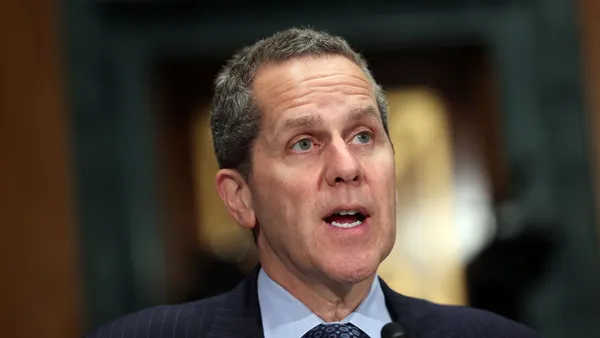Dive Brief:
- Goldman Sachs is pledging to invest $10 billion over the next decade — and funnel $100 million more in philanthropy — to address gender and racial biases felt by Black women, the bank said Wednesday.
- The bank is partnering with the nonprofit Hope Enterprise Corp., as well as mayors and historically Black colleges and universities (HBCUs) across the South, to distribute and lend capital to increase access to affordable healthcare, create housing, boost access to quality education and finance workforce development.
- Reducing the earnings gap for Black women — who earn 35% less per hour than white men, according to Goldman research — could create up to 1.7 million new U.S. jobs and increase annual gross domestic product by as much as $450 billion, the bank said.
Dive Insight:
Since the May 2020 killing of George Floyd by police, several banks, including Bank of America, PNC and Citi, have pledged more than $1 billion to fight racial inequality.
Citi, over the past several years, has put particular focus on the gender pay gap. In 2018, it became the first U.S.-based Wall Street bank to publish raw data revealing the pay disparity between men and women, and it has posted annual progress reports on its efforts to narrow that gulf. Further, the bank in 2019 launched a campaign documenting the moment girls learn of the pay gap.
Goldman's effort Wednesday marks the highest-profile initiative specifically targeted toward Black women, aiming at once to tackle wealth imbalance on two fronts.
"We're going to create a new model about what inclusive growth looks like," said Margaret Anadu, global head of sustainability and impact in the bank's asset-management unit, according to The Wall Street Journal.
The initiative is the second major ESG — environmental, social and governance — announcement Goldman has made in the past week. The bank vowed to achieve net-zero greenhouse-gas emissions in its financing activities by 2050 and net-zero carbon emissions in its supply chains by 2030, according to a statement posted on its website last Thursday.
Within its own organization, Goldman said in August it wants Black people to comprise 7% of its vice presidents by 2025 and Latinos to comprise 9%. The bank also wants 40% of its vice presidents to be women in that time frame, and committed to doubling its hiring of analysts from HBCUs by 2025, CEO David Solomon wrote in an email to staff last summer.
Goldman Sachs said Wednesday it engaged in listening sessions, alongside its partners, to understand the barriers Black women face.
"No investment could have a bigger impact than unlocking the economic potential of Black women," Solomon said in a press release. "In the face of significant disparities, they've shown admirable resilience, especially as they're starting businesses faster than anyone else in the U.S."
Goldman isn't the only bank to forecast a long-term, eight-figure commitment to equality. JPMorgan Chase in October said it would contribute $30 billion to address the racial wealth gap through a combination of loans, investments and philanthropy made to Black and Latinx communities.
Columbus, Ohio-based Huntington Bank in September pledged $20 billion to improve economic opportunities by 2025 in low-income communities and for people of color.
And Bank of America last month tripled its $5 billion commitment toward affordable homeownership in low- to moderate-income areas.














